If you plan some multi-day hiking and mountaineering self-supported tour in the Italian Alps, you will want to know that there are many options where you can have a shelter even for free.
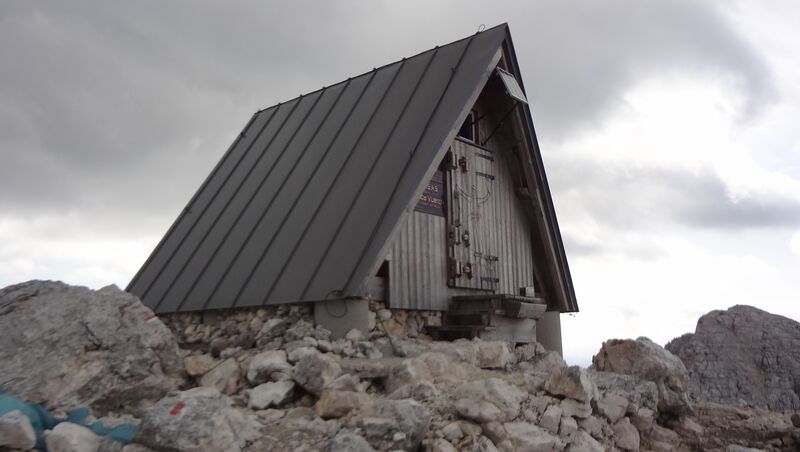
Types of shelters in the Italian Alps where you can sleep for free
I know that some people simply enter remote private cabins and barns and spend the night there. If you are in emergency, I think this is fine, the weather can be brutal there even in summer.
However, this should not be a practice that you plan on purpose. I have seen some people doing this and cannot say that it looks OK for me. Have read somebody’s report of using such a barn to stash gear and food before getting to the summits around.
But here are some of the most frequent legal options:
- Winter rooms in regular huts.
- Alpine bivouacs.
- Shelters built and maintained by some local groups and communities.
These shelters are normally always open (except for some that are among the first in the list, more below), and there are no guardians.
So you can sleep for free if you are without money, but in some of them you may leave some money in a box if it is available. Most likely there will be the word “offerte” (which means offers) written on the box or next to it.
Winter rooms in regular huts
A regular hut is usually on maps marked as “rifugio”. For this text, this is about emergency rooms that you can use only when the hut is officially closed. This means outside of full season, which is summer time. In most cases this is outside late spring and summer months (July-September period).
Note that many privately run mountain huts do not have such rooms. So it is best that you check in advance to avoid getting into trouble.
Also, some huts may open earlier than usual if the year is unusually warm and snow melts early. This means you would not be able to use winter rooms.
Anyway, you can expect only minimum comfort in such winter rooms. This is why it is advisable to always have your own sleeping bag and a sleeping pad. But in many of them you will have mattresses and blankets.
Typically, there will be no sign of where such a room is located. So look around the hut, if you see some stairs go up and check, most likely such a room is there.
Sometimes, you will have a separate cabin outside of the main hut, so check there as well. The picture below shows such an example, this is the winter room at the Guido Corsi hut below Jof Fuart.
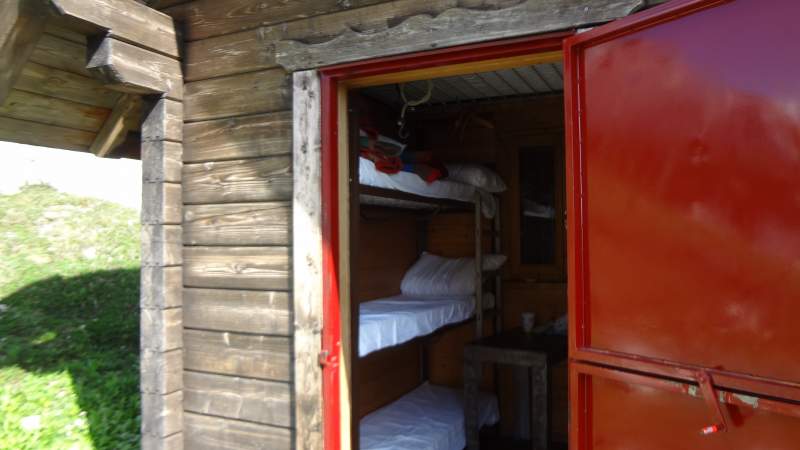
As you realize, there are even beddings and pillows inside as well. I was there in pre-season in June, so the hut was closed and this is why the shelter was open.
Alpine bivouacs
In the Italian Alps such shelters are usually metal containers normally in orange-red color so you can notice them easier from the distance. But there are quite a few in yellow and gray colors as well. They are owned and maintained by official mountaineering organizations like CAI, CAAI, etc. These are emergency shelters, so do not expect lots of comfort.
But they should always have mattresses and plenty of blankets. Normally there are no wood stoves there, these shelters are usually at places well above forest line. Though some may have a wood burning stove, and it is sometimes necessary to pick up some wood on the way up, you might need it.
However, in some of them there will be gas stove installed, the picture below shows one of them with this luxury, this is the Bivacco Del Piero below Monte Confinale.
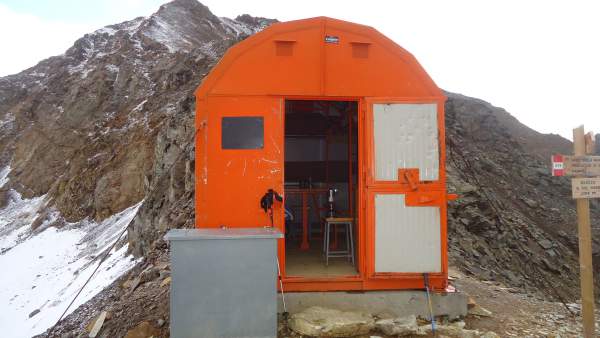
Shelters built and maintained by some local groups and communities
I must say it is amazing how many of such shelters are available throughout the Italian Alps. In majority of them you will find at least some of the following things, and sometimes all of them:
- A wood burning stove, with wood usually available and with tools to cut the wood.
- Sometimes you might have also a gas stove together with a wood stove.
- Dishes for cooking.
- Tables and benches for dining and sitting.
- I have seen some even with a fireplace inside.
- Beds with mattresses, or al least wood platforms for sleeping.
- Blankets.
- Some may have even a running water inside.
- Many of these shelters will have light due to some solar panel outside.
Have you ever been in Livigno area? Well, just to know that there are at least 5 shelters of that type known to me that you can reach from the roads around in one hour or so. All 5 of them have a wood stove inside and place for sleeping in four of them. Do let me know if you need more information about them, use the comment section below.
The picture shows one of them nicely positioned at a beautiful lake under the summit of Monte Breva. We found a shelter there because of the rain and stayed inside for several hours. There was even coffee available there, and this was the place where I saw a Bialetti pot for the first time.

Not all of them have a wood stove of course, so make sure you get informed before going there, these are high elevations and you may feel very cold in such an environment without some heating.
But note that you will almost always have a box for your voluntary donations, so be generous.
Some very specific shelters
I have seen a couple of shelters that were built by volunteers from the materials left from WWI. The picture below shows one of them, the Bivacco Battaglione Ortles. As you realize from my photo below, I made a fire in a stove inside by collecting planks and boards that were still around one century later.
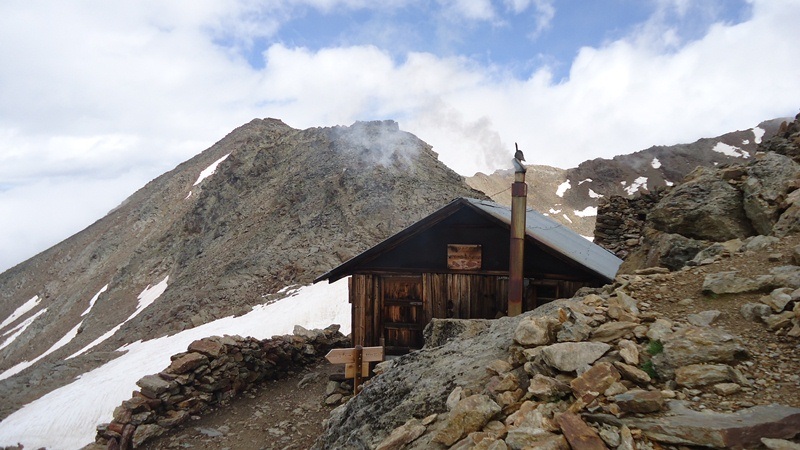
One particularly beautiful example is the cabin shown in the top picture above. This is Bivacco Luca Vuerich, one of the most spectacular shelters in the Alps that was built by the family of a mountaineer who died in those mountains. See how it looks inside:
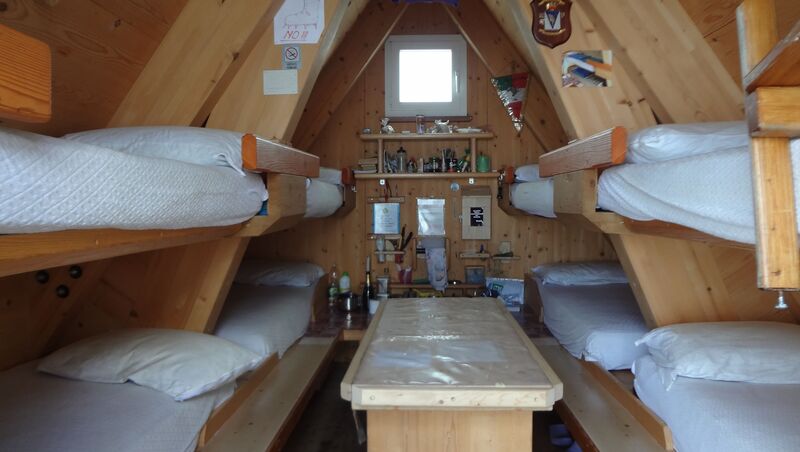
These are just a few examples, and these are my own pictures so I have been there myself. I also plan to add many more posts here in the site to cover this particular topic.
Positions of many more (300+) bivouacs you can see in the picture below which is a part of an interactive map that I have created. Note that it will be updated with more shelters added occasionally.
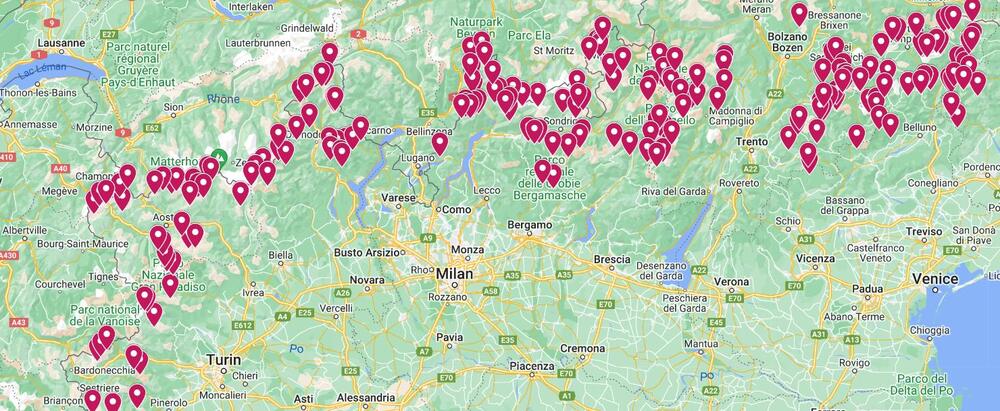
Note that there is yet another post here in the site with interactive maps that include bivouacs, shelters, and official huts in the Dolomites.
In addition, there are interactive maps for Julian Alps, and also for Livigno area. In time there will be more and they will be available in the category Huts and shelters here in the site.
So stay tuned and bookmark this site, you will find new texts here added regularly. If you have questions, do let me know in the comment section below.
Rasa says
Being an out-of-season hiker myself this is of great help. I had accidentally come across a ‘bothy’ in the Dolomites when doing AV1 in early June before any huts were open and it was a blessing despite it being basic. It certainly left me wondering if there were more and if there were any guide books or maps to find more of them as I prefer solitude, away from the crowds, which often means out of season hiking. So thank you for this.
Is there a link to your interactive map? It only allows me to save it as a still image.
Jovo says
Hi, yes you are right, this is particularly important for out-of-season people.
I am creating separate maps for various parts of the Italian Alps. I do have a complete map but is big and too much work to prepare for the site.
Currently, you have an interactive map for Dolomites, for Julian Alps, and also for Livigno area.
Also, some shelters are described in detail in a separate category Huts and shelters here in the site.